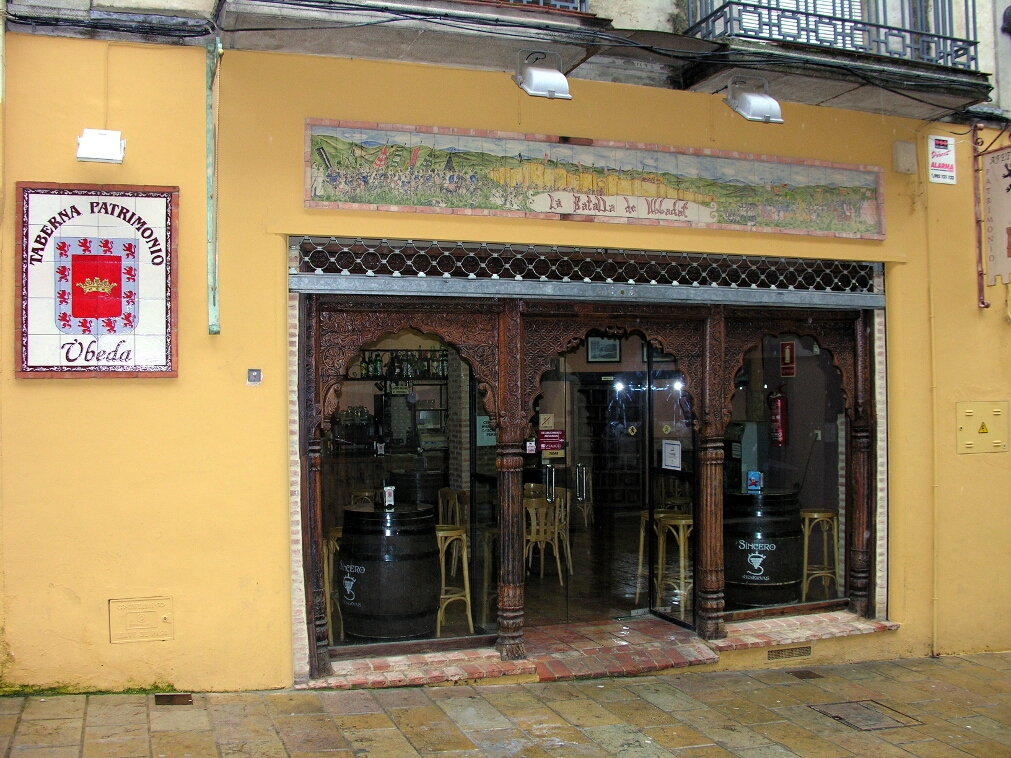
Úbeda was strategic at the same time as Baeza, and was made a UNESCO
heritage site in the same year, 2003. Like Baeza, it fell into decline in the
18th Century, but enjoyed an industrial recovery in the 19th, so the
monuments are mixed in with more modern constructions. As everywhere on the
old frontier between Ferdinand's influence and the Moorish areas, there are
evocations of the reconquest, here a cafe whose name recalls a battle neither
Google nor Wikipedia even know about.

The city's architectural masterpiece, the Cathedral, was closed for
restoration. www.tripadvisor.com says they have been going on for 25 years,
and no one has any idea when it will reopen; I think I can guess which
contractors they are using!.
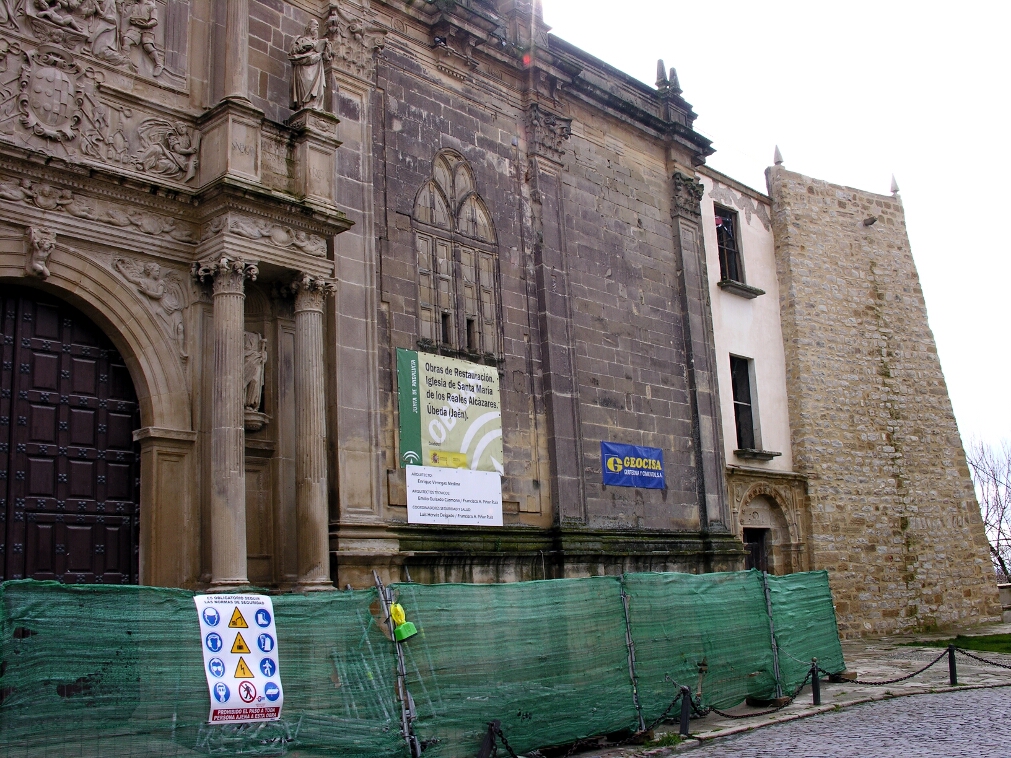
The next most remarkable church in Úbeda was Vandelvira's
Chapel of El Salvador.
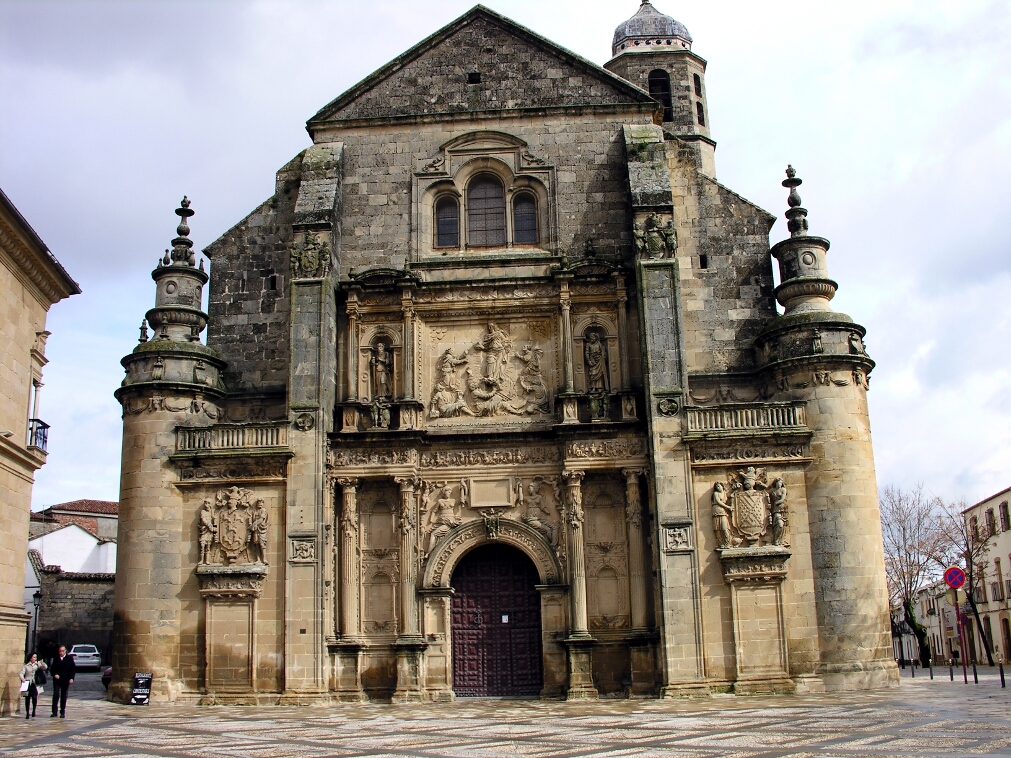
Guess what? It was lunch time, so the church was shut :-(
Next to the Chapel, the Parador, The Palace del Dean Ortega. It was
constructed by Francisco Ortega y Salido, who was the Dean of the Cathedral
of Malaga and chaplain of the Holy Chapel of El Salvador. Unfortunately
Ortega died before the building was completed. The building was constructed
in the middle of the 16th century and the architect was Andres de
Vandelvira.
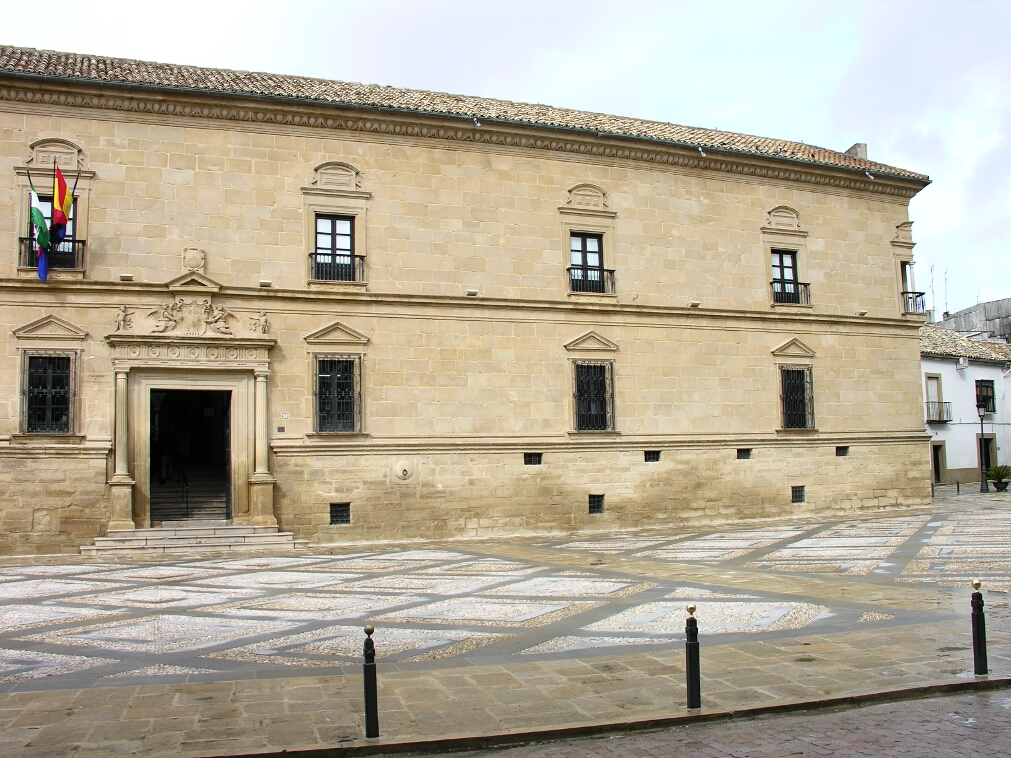
Another of Vandelvira's (I did look up his wiki entry to see whether he might
have Flemish origins, but there is no mention of this) buildings is the
Vazquez de Molina Palace, aka the Palacio de Las Cadenas (from the chains
which hang under the windows?), now the town hall. Here from the Plaza
Vásquez Molina, onto which the Cathedral, Chapel, and Parador all look.
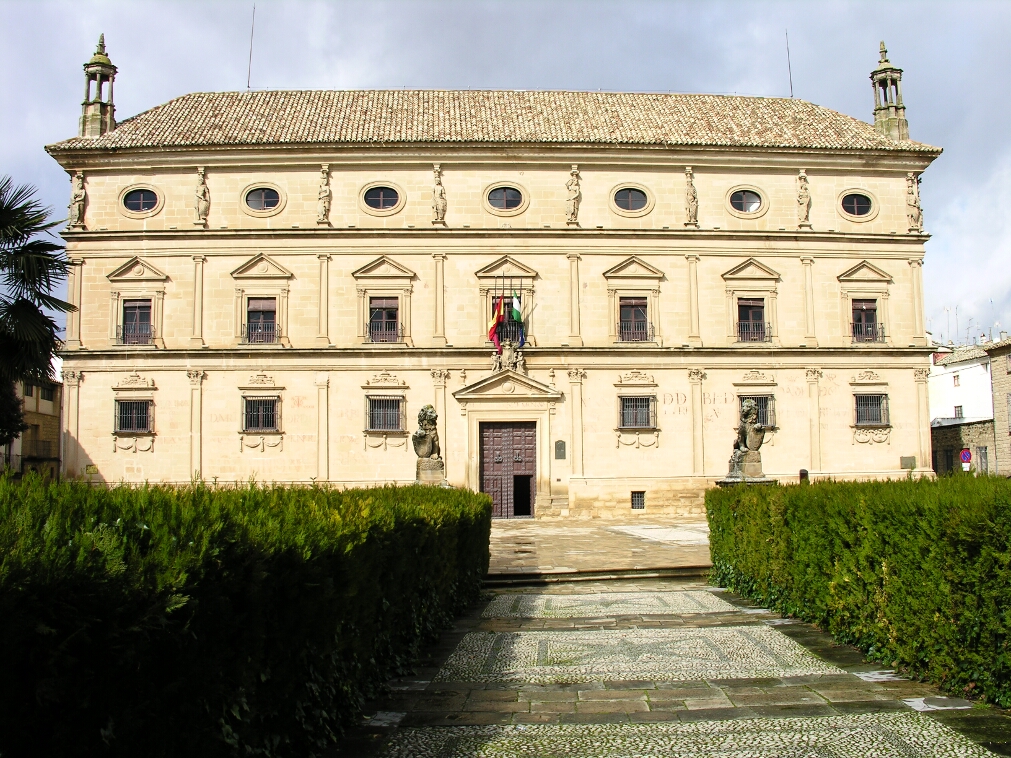
And here, betraying the fact that it can be cold in winter, even in
Andalucia, is the interior patio. The patio is huge and has one central
fountain, and a double arcade with arches that have a Mudejar design and the
marble columns have Corinthian capitals.
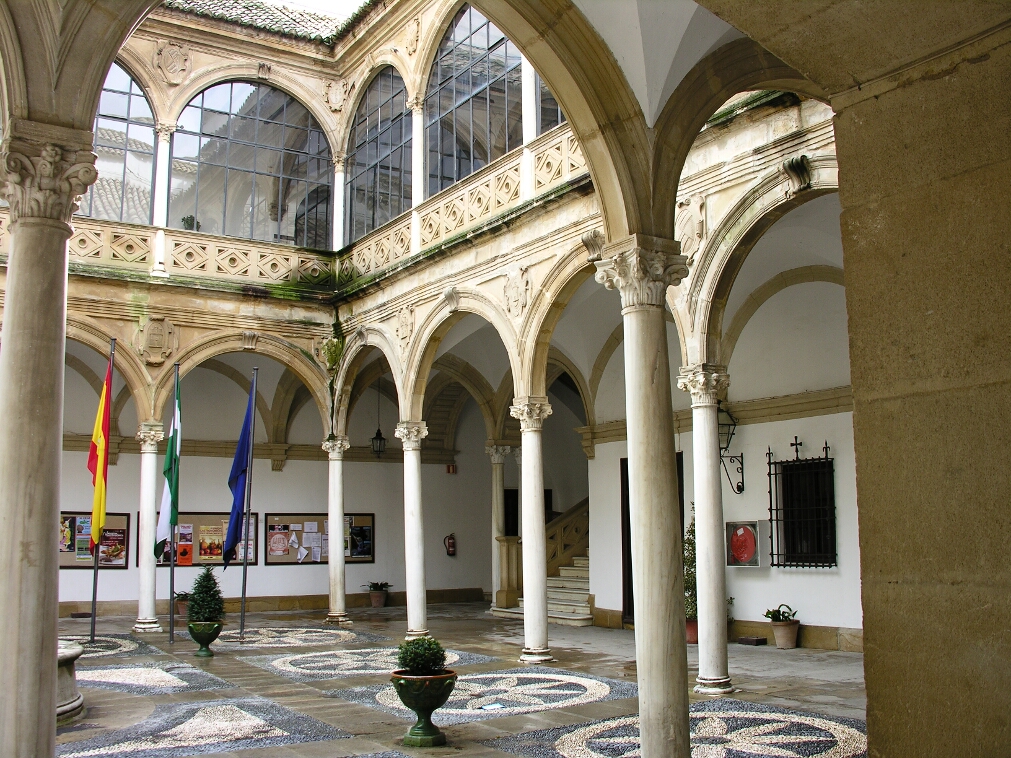
Vandelvira built the Palace of Vela de los Cobos in the middle of the 16th
century for Francisco Vela de los Cobos, a councilman of Ubeda and Captain of
Cavalry in the war against the Moriscos of Granada. Wait, you say! The Moors
had been expelled from Granada in 1492, so why was there a war against them
in the mid 16th Century? The Treaty of Granada
guaranteed the same freedom of religion to the Muslim population of Granada
as other Muslims in other areas which had been reconquered earlier on. These
guarantees were (Wiki's words) "short lived". As the 16th Century wore on,
the right to speak arabic, the right to wear traditional clothes, the right
to give their children Muslim names gradually disappeared. There was a revolt in the
Alpujarras (a mountain range south of Granada towards Almeria) in the third
quarter of the century. In the end, Philip III expelled all the Moriscos in
1609. Anyway, this (right of the tree trunk) is the kind of house you could
have if you were a Captain of Cavalry.
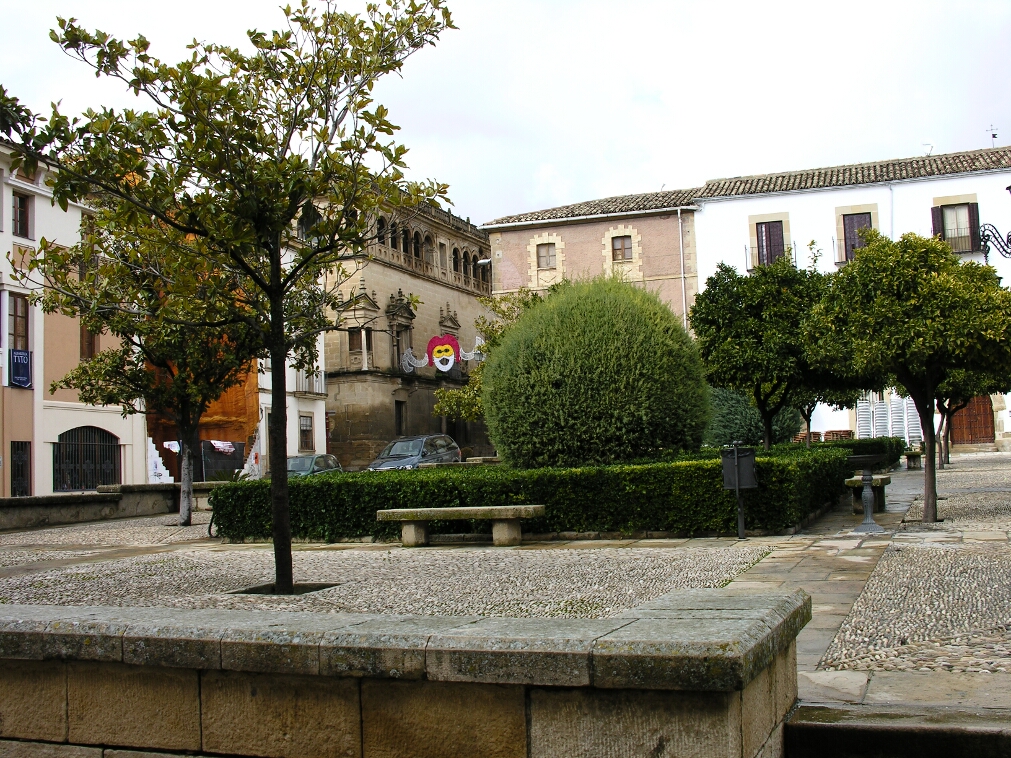
Not all the churches in Úbeda are renaissance. This is the Holy Trinity
church, built in the 18th Century, and closed in the 21st (at least, on
Friday in the first week of Lent).
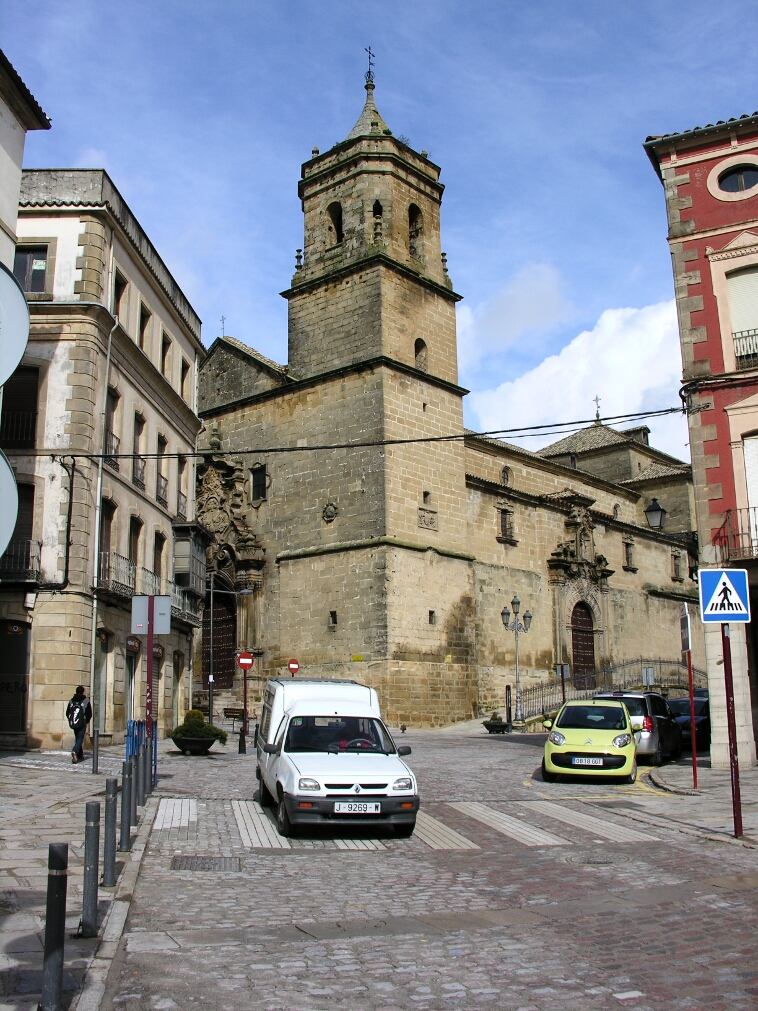
So we got back in the car to drive onwards to Córdoba.